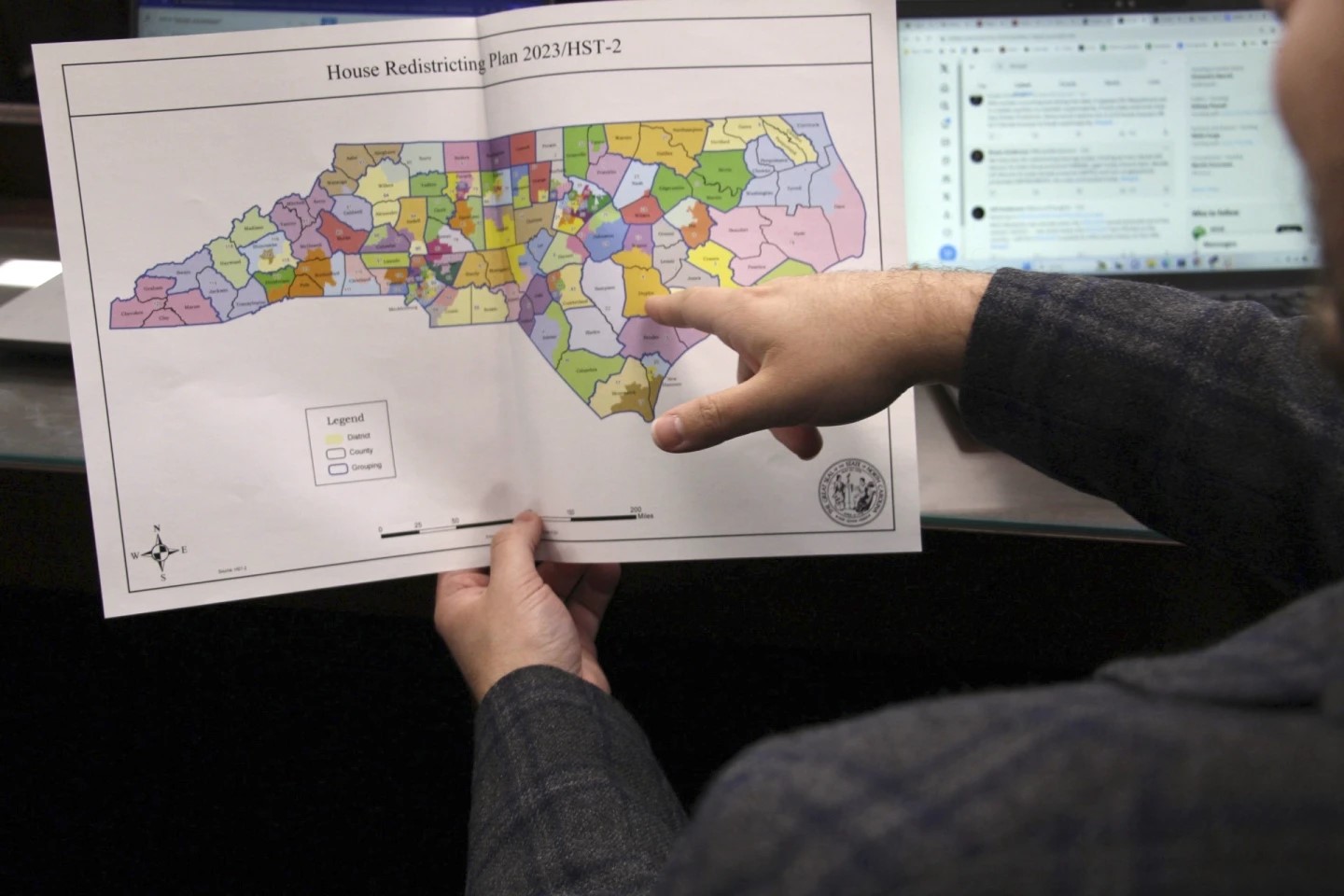North Carolina’s congressional map is still unconstitutional, election advocacy groups and Democrats wrote Wednesday, even though the U.S. Supreme Court recently rejected a lower court decision that threw out the map due to excessive partisanship.
But lawyers for Republican legislative leaders who helped draw the GOP-favored congressional boundaries in 2016 told a three-judge panel that based on Supreme Court orders last month, the North Carolina lines should be left in place. The 2016 map was designed in part to preserve the GOP’s 10-3 majority within the state’s congressional delegation.
The three judges last January determined the congressional map was an illegal partisan gerrymander that violated the equal protection and First Amendment protections of Democratic voters. It marked the first time a congressional plan was struck down on claims of partisan gerrymandering — that lines were drawn specifically so one party could keep or expand their power.
Last month, the justices vacated the January ruling and told the judges to re-examine the case based on the high court’s decision involving Wisconsin’s legislative boundaries.
The Supreme Court said the Wisconsin voters who sued had not proven they had the right to bring their case to court. In particular, the Supreme Court rejected the use of a statewide analysis of dozens of districts, and said voters had to prove their personal voting rights were infringed by the way specific districts were drawn.
The three judges in the North Carolina case — U.S. Circuit Court Judge Jim Wynn, District Judge Earl Britt and District Judge William Osteen — asked for legal briefs from the parties in the case by Wednesday before they decide what to do next.
Lawyers for the plaintiffs who originally sued urged the judges to act quickly so any appeal could be heard during the Supreme Court’s next session starting in October. That way, they wrote, resolution would be ensured for the 2020 elections.
Attorneys for the League of Women Voters of North Carolina, Common Cause, the state Democratic Party and Democratic voters wrote that legal standing to sue wasn’t a problem in the North Carolina case.
Their lawyers wrote the individual plaintiffs or group members live in each of the 13 congressional districts. The League of Women Voters’ attorneys also offered data from experts showing the value of an individual’s vote was weakened because Republicans packed them into one of three overwhelmingly Democratic districts or put them in the other 10 districts favoring Republican congressional candidates.
Regardless, they wrote, the Wisconsin matter has no effect on the three-judge panel’s previous decisions that the North Carolina map violated the voters’ First Amendment rights to freedom of association and the directive for states to hold fair congressional elections, according to the briefs.
“Our plaintiffs clearly have standing and have suffered real harm by the legislature’s extreme partisan gerrymandering,” Bob Phillips, executive director of Common Cause North Carolina, said in a release. “This case is key to protecting the constitutional right of citizens in North Carolina and across the nation to have a voice in choosing their representatives.”
But a lawyer for the Republican legislators wrote that the Wisconsin ruling means the North Carolina case is sunk because the map’s challengers used statewide evidence exclusively to make their partisan gerrymandering argument.
“None of the plaintiffs have standing to assert a vote dilution claim,” attorney Phil Strach wrote in asking the case be dismissed. “Plaintiffs’ reliance on statewide evidence has been rejected by the United States Supreme Court.” Strach said another Supreme Court ruling last month related to a separate North Carolina congressional redistricting challenge supports the argument that partisan gerrymandering claims must be thrown out.
The Republican-controlled General Assembly approved the challenged map in 2016 after federal courts had thrown out two of North Carolina’s 13 congressional districts as illegal racial gerrymanders. Republican lawmakers said they did not use racial data in drawing the current map, but rather included in its criteria a goal to retain the party’s 10-3 majority.







Comments on Chapelboro are moderated according to our Community Guidelines